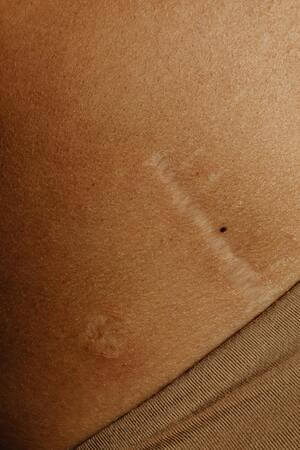
At Dr. James Dsilva' Clinic, we provide a range of scar removal techniques that produce observably better cosmetic results. The way these cosmetic procedures treat scars and the kinds of scars they treat differ. A combined strategy involving several treatment techniques is frequently necessary for scars. This works for scars that are complicated and have special qualities that are impossible to treat with conventional unidimensional techniques.
Anaesthesia will be administered; however, it may be topical or injectable, contingent on the necessary course of treatment. Topical anaesthesia is most frequently used for superficial or non-invasive procedures, however local or even general anaesthesia may be utilised for surgical scar revision.
Dr. James Dsilva will go over your medical history, take into account any particulars of the nature and location of your scar, and create a personalised treatment plan during your appointment for scar revision.
Types of Scars treated at Dr. James Dsilva’ Scar Treatment Clinic
- Acne Scars
- Hypertrophic Scars
- Keloid Scars
- Atrophic Scars
- Chickenpox Scars
- Post-Surgery Scars
What is Dermabrasion
Dermabrasion is a procedure that can be used to help improve the appearance of scars. It is a skin-resurfacing technique that uses a rapidly rotating device to sand the outer layers of skin. This can help to smooth out the skin and reduce the appearance of scars.
Types of Scars that Respond Well to Dermabrasion
Acne scars: Dermabrasion can be effective in improving the appearance of both ice pick scars (deep, narrow scars) and boxcar scars (wide, box-shaped scars).
Surgical scars: Dermabrasion can help to reduce the appearance of raised, thickened surgical scars.
Other types of scars: Dermabrasion may also be helpful for other types of scars, such as those caused by chickenpox or other injuries.
Benefits of using Dermabrasion for Scar Removal
Removal of Scar Tissue: Dermabrasion works by removing the top layer of skin, including the scar tissue. This helps to create a smoother, more even surface.
Stimulation of Collagen Production: The process of dermabrasion also stimulates the production of collagen, a protein that gives the skin its structure and elasticity.
The new collagen can help to fill in the depressions left by the scar, making it less noticeable.
Important Considerations
Not suitable for all skin types: Dermabrasion is generally not recommended for people with darker skin tones, as it can increase the risk of hypopigmentation (loss of skin color).
Potential side effects: Dermabrasion can cause side effects such as redness, swelling, and bruising. There is also a risk of infection and changes in skin pigmentation.
Multiple sessions may be needed: It may take multiple sessions of dermabrasion to achieve the desired results.
Results may not be permanent: The results of dermabrasion are not permanent, and the scars may gradually return over time.